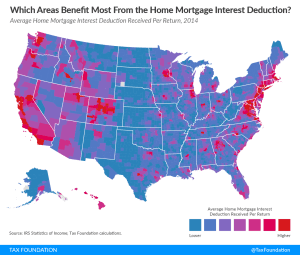
Dr. Huaqun Li is a Senior Economist at the Tax Foundation. She focuses on developing and maintaining the Foundation’s Taxes and Growth Model, which models the budgetary and economic effects of changes to federal tax policy.
Huaqun also uses the Taxes and Growth Model to model individual and corporate tax policy proposals and reform plans and helps with publishing the results. Before joining the Tax Foundation, she was a research economist at Regional Economics Models, Inc. at Amherst, MA, where she worked on model building, empirical analysis, and new product development on economic and demographic forecast models.
Dr. Huaqun Li received her PhD in Public Policy Analysis from George Mason University. Her primary research areas include regional economic development, regional inequality, entrepreneurship and new firms, as well as regional development in China.
Huaqun lives in Fairfax, Virginia. In her free time, she enjoys cooking, hiking, and doing yoga.
Latest Work


Comparing Wealth Taxation and Income Taxes
A low wealth tax rate is equivalent to a high-rate income tax. The interaction between wealth taxes and the existing income taxes must be considered when analyzing a wealth tax plan.
6 min read
Analysis of the “SALT Act”
Lawmakers recently introduced a bill to repeal the $10,000 cap on the state and local deduction (SALT) and raise the top tax rate on ordinary income from 37 percent to 39.6 percent.
4 min read
Analysis of the Cost-of-Living Refund Act of 2019
We estimate that a new proposal to expand the EITC would reduce federal revenue by $1.8 trillion and decrease long-run GDP by 0.29 percent, while boosting labor force participation for low-income tax filers by 822,788 full-time equivalent jobs.
10 min read
How Much Revenue Would a 70% Top Tax Rate Raise? An Initial Analysis
Due to a narrow tax base and a decrease in capital gains realizations, Congresswoman Ocasio-Cortez’s plan to tax income above $10 million would not raise as much revenue as intended. See our 10-year revenue estimates.
9 min read
The Distributional Impact of the Tax Cuts and Jobs Act over the Next Decade
Taxpayers in every income level will receive a tax cut in 2018 and for most of the next decade. See how the size of that tax cut will vary for each income group over the next decade with our new, long-term distributional analysis.
33 min read
Measuring Marginal Tax Rate on Capital Assets
This study demonstrates how Tax Foundation’s TAG model calculates the weighted average METRs for different capital assets in the corporate and noncorporate sectors. The high marginal rates of up to 53 percent in the corporate sector illustrate why there is an urgent need for business tax reform.
12 min read


The Tax Disadvantage Faced by Startups
2 min read
